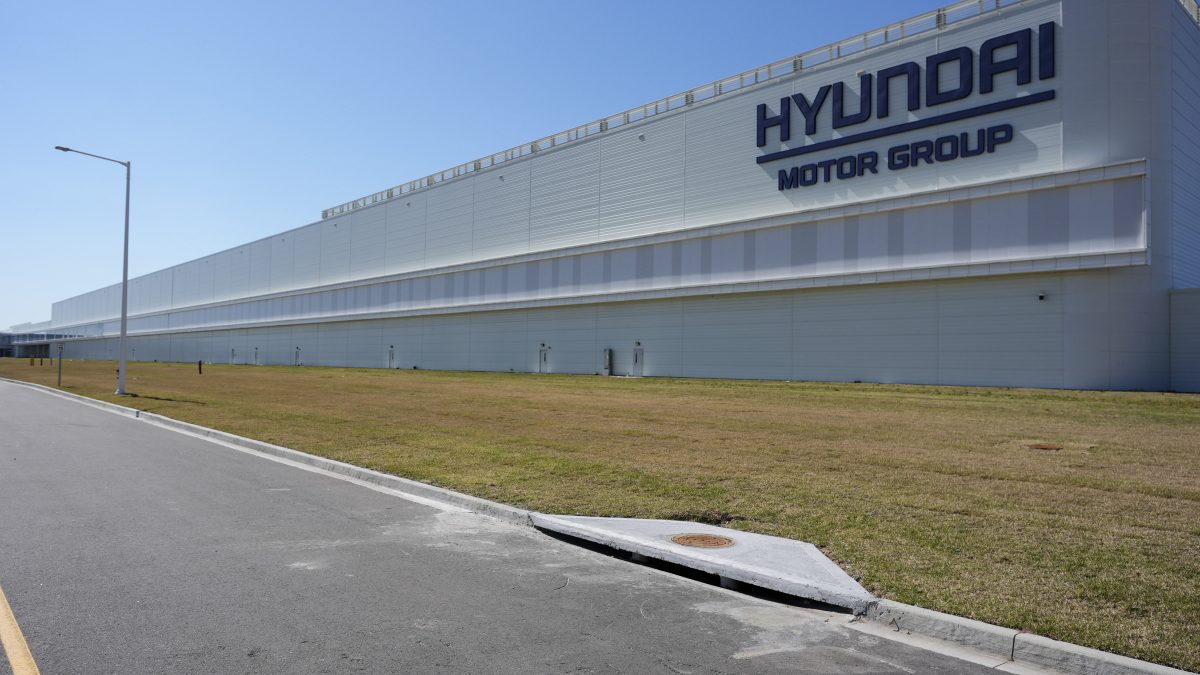The release of August’s jobs report painted a sobering picture of the American economy. According to the Bureau of Labor Statistics (BLS), only 22,000 jobs were added during the month, far below expectations and a sign that the labour market is stalling. The unemployment rate rose to 4.3 per cent, the highest level since 2021, pointing towards the slowdown. Revised data also showed that in June, the US economy lost 13,000 jobs—the first net decline since December 2020, when the pandemic wreaked havoc on the workforce.
What was once a centrepiece of President Donald Trump’s political message—that he would restore prosperity and revive American manufacturing—is increasingly under strain. Factories shed 12,000 jobs in August alone, leaving the sector down by 78,000 positions over the past year. Construction also weakened, with 7,000 jobs lost, while federal employment has dropped by 100,000 since January. Analysts have described the combined picture as one of a cooling economy weighed down by tariffs, mass deportations and policy uncertainty, according to The New York Times.
Trump’s reaction: Dismissal and deflection
Trump has not accepted these numbers quietly. Instead, he dismissed the BLS statistics as “rigged” and ousted Erika McEntarfer, the Senate-confirmed commissioner who oversaw the agency. He nominated EJ Antoni, a conservative economist and political ally, to replace her, though Antoni has yet to be confirmed by the Senate.
Economists and former BLS officials warned that politicising the agency undermines the credibility of economic data, which investors, businesses and policymakers rely on to make decisions. Aaron Sojourner of the Upjohn Institute called the move akin to “gouging our eyes out,” saying it blinds the nation to reality and worsens decision-making, The New York Times reported.
While Trump has downplayed the significance of the poor data, his administration has simultaneously seized upon other headlines—none more prominent than a massive immigration raid targeting South Korean workers at a Hyundai-LG battery factory in Georgia.
The Hyundai-LG raid: A show of force
In early September, US Immigration and Customs Enforcement carried out what officials described as the largest single-site enforcement action under Trump’s second term. Nearly 500 workers were detained at the Hyundai-LG battery facility in Ellabell, Georgia. Of those, more than 300 were South Korean nationals, many of them technical staff or mechanics working for contractors on the construction of the plant.
Footage released by authorities showed workers in shackles and yellow vests bearing corporate logos, a scene that quickly made headlines across South Korea. Seoul reacted with alarm, dispatching its foreign minister to Washington and arranging a chartered plane to repatriate the detained workers once administrative procedures were complete. South Korean media described the incident as a “shock,” with the Dong-A Ilbo newspaper warning that it could have a “chilling effect” on investment in the United States, AFP reported.
The Hyundai-LG plant is no small enterprise. Valued at $4.3 billion, it represents the largest economic development project in Georgia’s history and a key component of America’s electric vehicle ambitions. The plant is slated to produce batteries for 300,000 EVs annually once it opens in 2026. Yet experts have warned that the raid could significantly delay the project and deter future foreign investment.
Immigration crackdowns and economic contradictions
The timing of the raid raised eyebrows. On one hand, Trump has encouraged foreign companies like Hyundai and LG to invest billions in US manufacturing. On the other, his administration has imposed strict visa restrictions and intensified workplace raids. Many of the South Korean workers detained were reportedly on ESTA or B-1 visas, which allow business visits but not hands-on construction work. Companies had resorted to these visas because of the difficulty of securing H-1B approvals under Trump’s tightened system, AFP said.
Analysts said the crackdown reflects a contradiction as Washington is urging allies to invest in American industry while simultaneously hampering their ability to staff projects. Professor Kim Dae-jong of Sejong University noted that South Korean firms may now suspend trips to the US or rethink projects altogether, given the bureaucratic hurdles and risks of raids.
A convenient distraction?
Against the backdrop of worsening jobs data, some observers suggested that the raid served a political purpose beyond immigration enforcement. By focussing public attention on foreign workers allegedly “taking American jobs,” Trump shifted the conversation away from the negative jobs report and onto a narrative of protecting US workers.
Trump himself emphasised this line in a social media post, declaring that foreign companies must “respect our Nation’s Immigration Laws” and prioritise hiring and training Americans. His administration defended the raid as necessary to safeguard jobs for US citizens. Homeland Security Investigations official Steven Schrank said the operation “sends a clear message” that companies exploiting the system would be held accountable.
Critics, however, argued that such rhetoric distracts from the deeper structural problems facing the economy—rising costs from tariffs, reduced demand from immigration crackdowns and uncertainty surrounding policy shifts. Gregory Daco, chief economist at EY-Parthenon, warned that the US is edging toward a “stagflationary environment” where inflation and unemployment rise simultaneously, The New York Times said.
Manufacturing promises collide with reality
Trump has long promised to restore American manufacturing jobs, portraying himself as a champion of the industrial heartland. Yet the latest data contradicts those pledges. Manufacturing employment has declined by 78,000 over the past year, including 12,000 jobs lost in August alone. Analysts attributed the slump to a combination of global supply chain disruptions, higher input costs due to tariffs and reduced foreign investment confidence.
The irony of the Hyundai raid lies in this very tension. The Georgia factory was meant to be a flagship example of foreign investment boosting US manufacturing. Instead, the crackdown jeopardised its timeline and risked alienating South Korea, a key ally and one of America’s largest investors. South Korean commentators openly questioned whether Washington’s heavy-handed tactics were compatible with its calls for deeper economic cooperation.
Political stakes for Trump
Eight months into his second term, Trump faces pressure to demonstrate that his economic agenda is working. With unemployment rising and job creation slowing, he has lashed out at Federal Reserve chair Jerome Powell for failing to cut interest rates. On his social media platform, Trump branded Powell “Too Late” for not reducing rates earlier, framing monetary policy as the key obstacle to growth.
Yet many economists argue that Trump’s own policies bear much of the blame. His tariffs have driven up prices, his immigration crackdowns have disrupted labour markets and his public attacks on institutions like the BLS have undermined investor confidence. Daniel Zhao, an economist at Glassdoor, said the US is “heading into turbulence without the soft landing” that policymakers had hoped for, as per a report in The Independent.
In this context, immigration raids provide a political tool to shift the narrative. By dramatising enforcement actions against foreign workers, Trump reinforces his image as a defender of American jobs, even as the data shows otherwise.
Strains in US–South Korea relations
The fallout from the raid extends beyond economics. South Korea, a close ally that has pledged billions in US investment, was blindsided by the arrests. South Korean lawmakers and newspapers criticised the operation as a betrayal of an ally, warning of potential long-term damage to trust.
Although Trump insisted that the incident had not strained relations, the images of South Korean workers shackled in Georgia spread rapidly across Korean media, fuelling public anger. Analysts suggested that while the US may still attract investment from Seoul, companies could become more cautious, slowing down or scaling back projects.
A strategy of deflection
The evidence suggests that Trump’s immigration raid on South Korean workers was not merely about enforcing labour laws. Coming immediately after the release of troubling jobs data, the spectacle of shackled foreign workers served as a convenient distraction from the faltering labour market. It allowed the administration to redirect attention toward a familiar narrative that foreigners threatening American jobs, rather than economic policies undercutting them.
Yet the risks of this strategy are significant. By politicising economic data, alienating foreign investors and straining relations with allies, Trump may be undermining the very economic recovery he promised to deliver. Manufacturing jobs continue to vanish, unemployment is climbing and uncertainty clouds business investment. While immigration raids may score short-term political points, they do little to address the deeper structural problems of the US economy.
If the August jobs report is any indication, those problems are mounting—and no amount of distraction can conceal the fact that the numbers are moving in the wrong direction.
End of Article

)

)